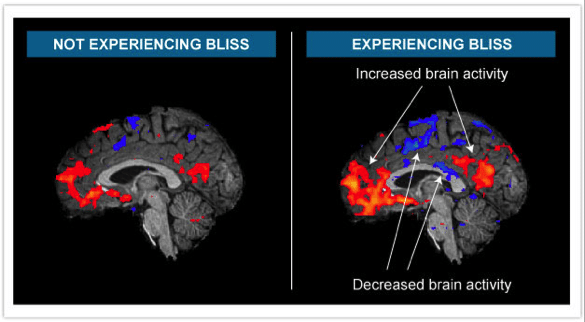The latest trends in market research
Market research has always had a vital part to play in the development of a robust marketing strategy and campaign. But with the advent of new technologies and an increasing number of channels to gain research and insight from, it’s tough to stay ahead of the game and in competition with your peers. For example, do you know your EEG from your fMRI? Not to worry, here we run through a few of the latest developments in market research industry trends and technology.

Neuromarketing
Neuromarketing uses medical technologies such as biometrics or facial tracking, to monitor the brain’s responses to marketing stimuli. What is most interesting about the development of this technology, is that in some cases neuromarketing can monitor responses that the subject themselves isn’t actively aware of. Therefore, measuring behaviour at this subconscious level could be considered more reliable than self-aware data gathered by focus groups or self-reporting surveys.
Eye tracking
This form of neuromarketing research isn’t new, but the applications continue to evolve and unlock deeper insights into which individual elements of an advert hold the most attention and engagement.
True Impact, a Canadian neuromarketing company, conducted research into the effectiveness of touch marketing methods for brand recall. The study compared digital media, such as email and display advertising, with direct mail. Eye-tracking was used as well as EEG to test which adverts were easily understood, which ones generated in the best engagement and conversion. The study ultimately concluded that direct mail provided higher brand recall than digital media.
With the help of eye tracking, consumers’ attention and spontaneous reactions can be accurately recorded, to help guide and refine the marketing channels chosen and the creative layout of your campaigns (tweaking the call to action, size of copy or types of images used).
Facial tracking
Often used to support eye tracking findings, facial tracking is one of the latest trends in market research that can accurately capture detailed real-time data of consumers’ reactions. And with the introduction of facial expression recognition technology, it can provide honest and immediate feedback on consumer behaviour in response to advertising stimuli.
According to Sightcorp, facial tracking technology can capture extremely brief micro-expressions at the point-of-experience and automatically detect the six basic expressions: happiness, sadness, anger, surprise, fear, and disgust. Valuable insight when developing marketing campaigns to provoke a desired response.
fMRI
Functional Magnetic Resonance Imaging (fMRI) can provide a huge amount of consumer insight into the effectiveness of marketing by measuring the blood flow and brain activity in response to advertising before, during and after stimuli.

This has huge implications in efficiencies for marketers. Early concepts can be tested for responsiveness and engagement before launching to the general public – saving time and budget.
In a US study conducted by the National Cancer Institute for their telephone hotline, they tested three different adverts to measure which resulted in the higher level of brain activity and prompted conversion. By incorporating neuromarketing testing into your campaign development, this ensures truly engaging content makes it out to your target audience.
While there are simpler methods of neuromarketing, fMRI shouldn’t be discounted. Because branding and marketing strategies so frequently rely on establishing an emotional connection with consumers, fMRI can provide revealing insights into the subconscious processes of consumer behaviour.
EEG
Electroencephalogram (EEG) measures the brain’s electrical activity in response to marketing stimuli. In a similar way to how fMRI works, this can uncover subconscious reactions to advertising, to help focus marketing efforts and increase effectiveness.
Electrical brain activity is measured using small biosensors, which are placed on the head, allowing full range of motion and a comfortable experience for the test subject. EEG also overcomes one of the main drawbacks of fMRI – of needing your test subject to lie completely still within an MRI chamber to ensure viable results.
EEG testing can be conducted effortlessly, without the need for larger equipment. Therefore, this form of neuromarketing can take place out in the real world, depending on the stimuli – outdoor advertising, cinema or theatre, tube station advertising. Gaining data from subjects in an authentic environment can provide further revealing insights into the reactions of your audience, making it one of the most exciting emerging trends in marketing research.
An EEG study ultimately concluded that direct mail provided higher brand recall than digital media.
Mobile qualitative
The use of mobile qualitative data is growing, as it enables feedback while participants are actively using or testing a product. Questions are sent to a participant’s mobile device to provide feedback over a set time period of days or weeks.
The beauty of mobile qualitative research is the immediacy of the feedback for the researcher. And with the help of mobile software analysis tools, researchers are able to analyse the results in real-time. The data gathered is also taken from the real-world rather than a controlled test environment.
Mobile qualitative research also allows the consumer to participate when it is most convenient for them, providing data in a way that feels effortless – and on a device that is so seamlessly integrated into their lifestyle.
Researchers can also capture mobile data via photo, voice recording or video, providing a well-rounded insight into a consumer’s thoughts, feelings and reactions to a product or service. It also offers multiple options for consumers depending on their preferences and style of communication to feedback in a way that feels most comfortable to them.
Vast amounts of data is also available 24/7 to marketers from social media platforms. According to Sprout Social defining ROI for social media remains the top concern of 55% of social marketers. Today however, the analysis tools available to marketers are much more advanced. Making it that much easier to analyse your audience’s posts, likes, shares, videos watched, mentions, URL clicks to further inform your marketing strategy.

Defining ROI for social media remains the top concern of 55% of social marketers.
Audience receptivity
According to Kantar’s report AdReaction: Getting Gender Right, online advertising is 28% less effective among females than males in terms of brand impact. There are many reasons that are attributed to this trend, but over-simplistic targeting is a major contributing factor.
Conducting audience receptivity research as part of the creative process, helps to unearth tendencies in behaviour that transcend demographics among audiences – reducing over-simplification. Rather than reducing people down to a ‘type’ – whether it be by gender, race, age etc – this research can reveal emotions or life events that indicates relevance to a product or resonance with a brand’s messages. Tapping into these key moments and feelings has the ability to forge trust and build solid brand loyalty.
Final thoughts
Where possible, we recommend testing creative routes ahead of launch, to make sure your branding and marketing campaigns resonate as strongly as possible with your target audience. Insights like these can really set your marketing activity apart from your competition and gain the cut through you need.
While focus groups and surveys go a long way to uncovering customer insight, the advances in neuromarketing – one of the most exciting emerging trends in marketing research – continue to expand on the data available to marketers with relative ease, and the introduction of new research channels provide further choice for in-depth monitoring.
For the latest news on market research industry trends, head on over to our Articles page. Alternatively, if you have any questions about how you can use market research to inform your marketing campaign then get in touch with us. We’d love to help!